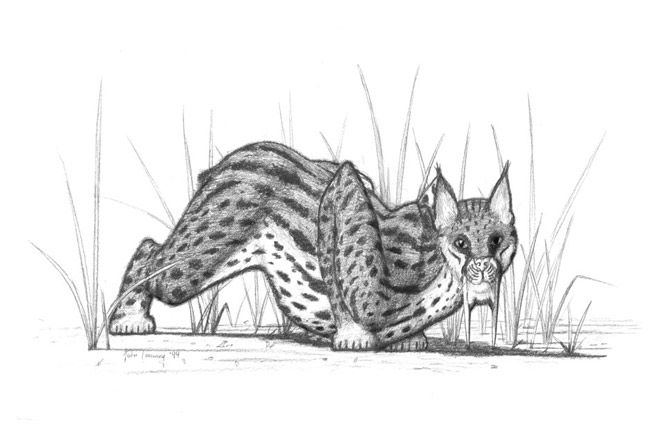Climate Change Wiped Out Woolly Mammoths, Saber-Toothed Cats

Mighty swings in climate played a major role in causing mass extinctions of mammals, such as woolly mammoths and saber-toothed cats, in the last 50,000 years, researchers now suggest.
Between 50,000 and 3,000 years ago, 65 percent of mammal species weighing over 97 pounds (44 kg) went extinct, together with a lesser fraction of small mammals.
"Why these species became extinct in such large numbers has been hotly debated for over a century," said researcher David Nogues-Bravo, a geographer at the University of Copenhagen in Denmark.
Fifty thousand years ago, global climate began getting colder and drier, reaching full glacial conditions 21,000 years before the present. Since then, the climate has warmed up, creating new opportunities for people to colonize the planet.
An international team of scientists peering closer at these swings now suggests the greater the climate swing a locale experienced, the higher the extinction rates they saw.
"Until now global evidence to support the climate change argument has been lacking," Nogues-Bravo said.
The challenge was that with past evidence scientists had to untangle the impact human arrival might have had, as well as pin down the actual mass extinction rates and when extinctions and climate changes really happened.
Sign up for the Live Science daily newsletter now
Get the world’s most fascinating discoveries delivered straight to your inbox.
Climate took out large and small mammals
To address this problem, the researchers analyzed data on a global level.
"By dealing with the issue at a global scale, we add a new dimension to the debate by showing that the impact of climate change was not equal across all regions," Nogues-Bravo explained.
For instance, in Africa, climate shifted to a relatively lesser extent, which matches up with fewer animals going extinct seen there. However, in North America, more species suffered extinction — including giant beavers, dire wolves and ground sloths — corresponding with a greater degree of climate change.
Their findings linking climate change with mammal extinctions are consistent across different animal sizes as well, which strengthens their argument. Scientists have generally assumed that humans had an impact mostly just on populations of large mammals, which they hunted as game, while climate change would impact both small and larger animals.
These findings are "suggestive," said Eric Scott, curator of paleontology at the San Bernardino County Museum in California, who did not take part in this study. "It does a fairly good job of promoting the idea of climate change as a causal factor, but there's a lot more work to do here."
The only potential exception to this trend the researchers saw was in South America as a whole, which on average had a relatively small climate swing but a high level of mammal extinctions. However, Nogues-Bravo noted that most of the mammal extinctions detected so far came from the southern part of South America, which also experienced a large climate swing.
"So our results are consistent and still show that the southern parts of South America suffered large climatic changes and [a] high number of extinctions," he said.
How extinctions varied
These findings not only suggest the climate might have played a role in causing mammal extinction, but also demonstrate how the effect might vary across regions and continents.
"While climate change is not the only factor behind extinction, past, present or future, we cannot neglect in any way that climate change, directly or indirectly, is a crucial actor to understand past and future species extinctions," said study researcher Miguel Araújo at the National Museum of Natural Sciences in Spain.
In the future, the researchers noted they would like to better incorporate the impact humans might have had on these extinctions into these analyses. The challenges there are bringing many different scientific disciplines together, such as archaeology, anthropology, climatology, ecology, evolutionary biology and biogeography, in order to fully appreciate the resulting interplay between humans and other effects, Nogues-Bravo said.
The scientists will detail their findings in an upcoming issue of the journal Evolution.
- 25 Amazing Ancient Beasts
- The World's Deadliest Animals
- Top 10 Surprising Results of Global Warming

Most Popular

